Gardening is a therapeutic hobby that yields incredible rewards in the form of fresh vegetables right in your backyard without having to buy from the store. The demand for organic foods has risen sharply as more people become health conscious for reasons such as weight loss and prolonged life.
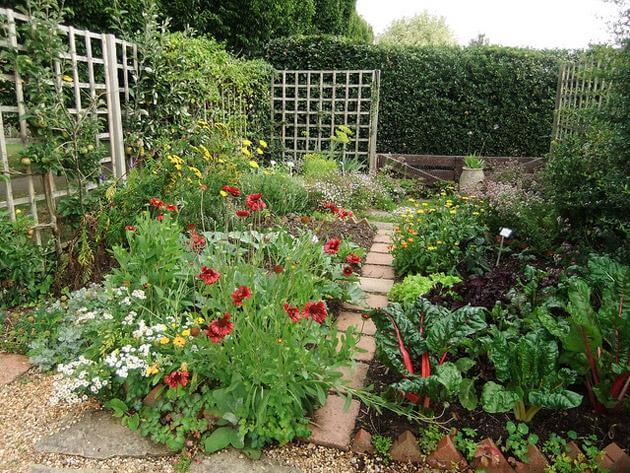
The media constantly bombards consumers with information on healthy alternatives to food that promise to ward off lifestyle diseases such as diabetes, gout, and even cancer. If you are looking to embark on a healthy lifestyle for you and your family, consider starting an organic garden filled with your favorite vegetables and fruits.
Where do I find the time? You may wonder how you can squeeze in gardening after a long day at work capped with a long commute back home. The minute you get home, you find other pressing duties such as cooking dinner, supervising your kids’ homework and baking cookies for a show-and-tell the next day. How about making gardening a family activity? You can use this time to catch up with the highlights of the day from everyone.
What is Organic Farming?
Organic farming goes beyond avoiding the use of pesticides and genetically modified organisms. If you are new to organic farming or crop husbandry in general, you need to stock up your tool shed with farming equipment such as a hoe, spade, pole saw, hand-weeding tool and a fork. You can fetch these tools from the gardening section of your local supermarket. In this article, we have outlined seven steps to starting your own organic garden. Let’s get started!
1. Identify the Patch
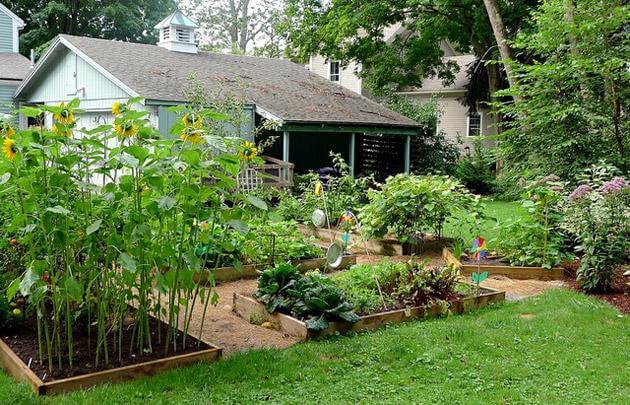
While selecting the perfect location for a garden, be mindful not to thwart activities that happen in your backyard such as barbecues, swimming, kids playing, and hanging lines for laundry. If you have ample space in your yard, try one of the corners so you can use the wall as a wind breaker. If you are concerned about interference, erect a fence around the plot to keep off kids and family pets.
2. Tilling the Land
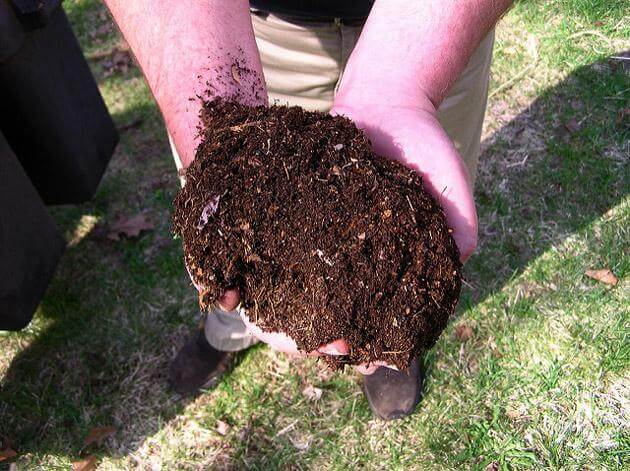
Once you have selected the perfect location, you need to condition the soil by tilling and applying organic nutrients. Remember to use organic fertilizers as they are safer than chemical fertilizers. Good agricultural practice requires the ground to be left to air for a couple of days before planting seeds. You can go a step further and take a sample of soil to a lab for testing so you can know the level of nutrients present then decide what other treatments can be done to prep the ground.
3. Composting
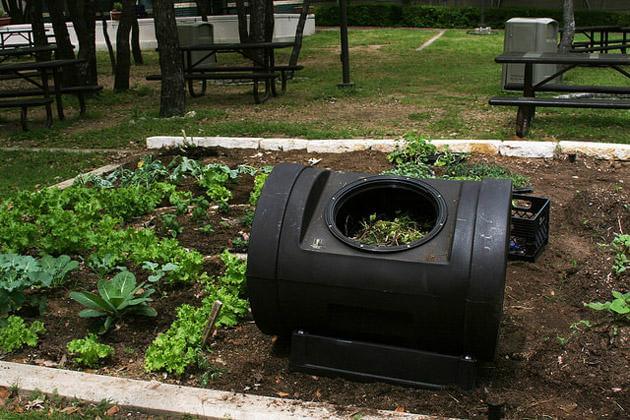
Organic farming relies heavily on compost as it provides nutrients, shade and keeps off weeds. If you live on a farm, you can easily get compost from the cowshed or remains of other crops after harvesting. There are more sophisticated methods of making compost that takes several weeks to prepare, but if meticulous composting is not your cup of tea, you can buy pre-made compost from the agricultural store. Apply organic fertilizer to boost the nutrient content.
4. Source for Seedlings
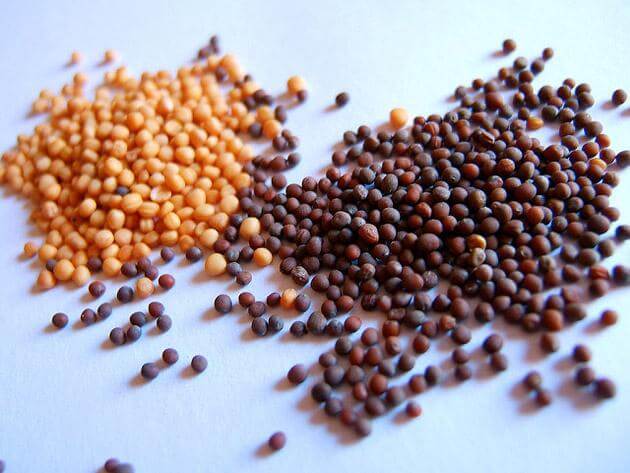
Many people will opt to purchase seedlings from a nursery then transplant them onto their land. This method is faster than growing the seeds from scratch. The latter can be frustrating when seedlings refuse to rise due to poor handling or lack of enough nutrients. Most nurseries will have seedlings arranged according to their type of crop with botanical and regular names indicated at each plot. Select healthy plants with strong roots find out the best transplanting practice for each type of plant. Remember to ask for organic seedlings planted without interventions of chemical fertilizers that may poison your patch.
5. Planting Seeds
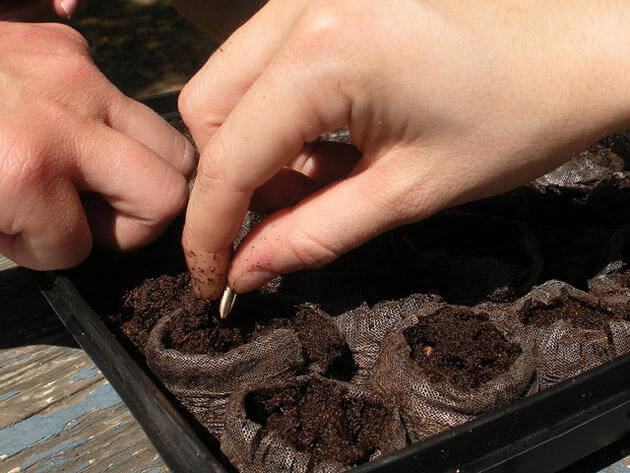
This stage is probably the most exciting stage for gardening enthusiasts. It is time to get your hands dirty! Well, if you are new to farming you may want to preserve your well-manicured hands and choose to wear gloves instead. Consider spacing between crops; you can opt to plant your vegetable seedlings together a process called grouping. Less space between plants helps to conserve the moisture of the soil and ensure proper utilization of nutrients. However, be careful to leave room to allow proper air circulation. Find out about the blooming habits of the seedlings you plant. Some vegetables bloom into big leaves that require space otherwise the leaves droop and start rotting.
6. Watering
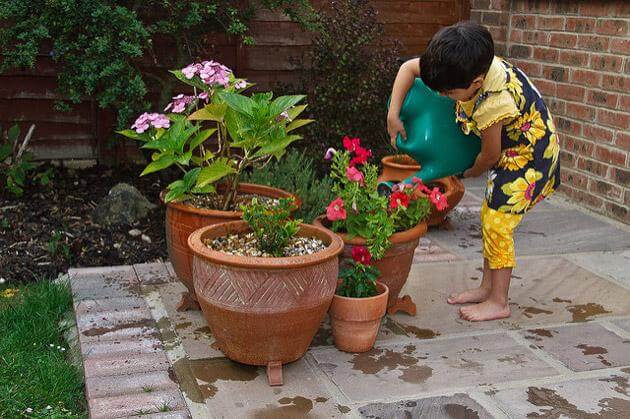
Crops need water to grow. As obvious as this statement may sound, you need to establish a steady watering routine especially for the first several weeks as the plants begin to grow. Water the patch in the morning before heading to work when the sun is not up, and therefore, water can sip through the soil without evaporation. Neglecting to water the plants can be detrimental in the summer when scathing temperatures can kill crops. Involving the kids to help with the watering during school breaks can be a good learning experience or just fun childhood memories. Teach the kids to focus on the base of the plants as opposed to the leaves as this may cause damage and rotting.
7. Weeding
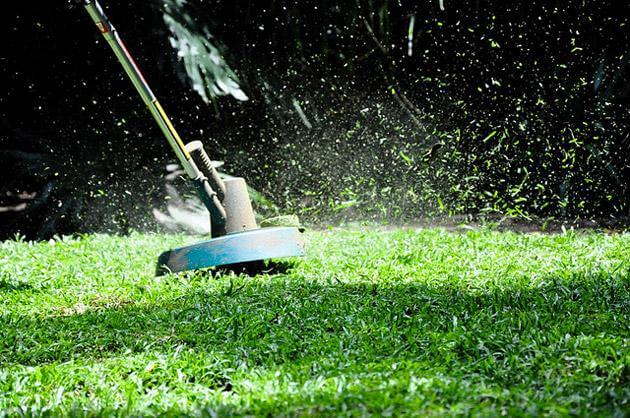
This part of organic gardening is inevitable as most weeds thrive in the same conditions as plants. Good weed thrives alongside the plant without depriving it of nutrients, these little helpers even go as far as providing shade! Bad weeds, on the other hand, are parasitic in nature. They suck up all nutrients and water from the soil leaving the plant weak. Bad weeds also harbor pests that attack the plant, and this may lead to stunted growth or even death of the plant. Weeding can be done on a regular basis by simply yanking the weeds out (another family affair!). For tall plants, you need to use a pole saw to help you prune the extra leaves or branches. Apply mulch on a regular basis to discourage the growth of weeds. Your crop will be ready for harvesting in a few weeks.
Conclusion
If you are looking for a great pastime, organic gardening is worth a try. You get to preserve your land by applying organic waste and biological materials and reap fresh vegetables as rewards. Investing in the right equipment will enhance your gardening experience and save you time. We will keep you posted with more organic gardening ideas that have been tried and tested by gardening experts.
Hope you enjoyed this article. If you have any other suggestions you think I should have mentioned? Please let me know in the comments.
–
Shary Saunders is a blogger at sharycherry.com. Gardening and landscaping have been her passion for years. You can find Shary on Twitter at @SharySaunders.